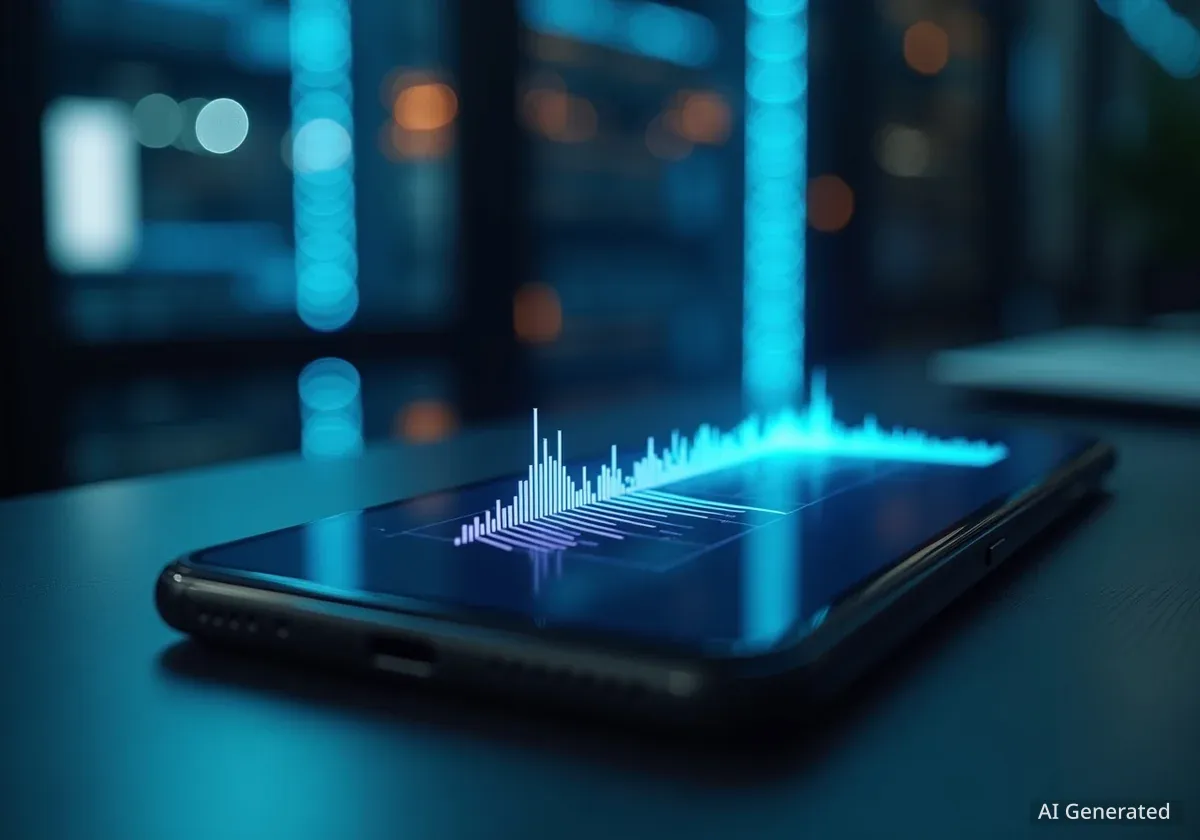A new form of corporate fraud is on the rise as employees use artificial intelligence to generate highly realistic fake expense receipts. Leading expense management software providers report a significant increase in these fraudulent submissions, creating a major challenge for companies that rely on traditional verification methods.
Key Takeaways
- Generative AI tools are making it simple for employees to create convincing fake receipts for expense reports.
- One software provider, AppZen, reported that AI-generated fakes accounted for 14% of fraudulent submissions in a single month.
- The realism of these fakes, including details like paper wrinkles and signatures, often makes them undetectable to the human eye.
- Companies are now deploying their own AI systems to detect patterns and metadata indicative of AI-generated images.
A New Era of Digital Deception
The accessibility of powerful AI image generators has lowered the barrier for creating fraudulent documents. What once required skills in photo editing software can now be accomplished in seconds with a simple text command to a chatbot.
Expense management platforms have observed a sharp uptick in these AI-generated submissions, particularly following the release of more advanced image-generation models from major tech companies like OpenAI and Google.
Fraud by the Numbers
According to a survey by expense platform Medius, about 30% of financial professionals in the US and UK have seen a rise in falsified receipts since OpenAI launched its advanced GPT-4o model.
These are not crude forgeries. The AI-generated images are remarkably sophisticated, often including subtle details like crumpled paper, realistic itemization based on actual menus, and even signatures, making manual verification nearly impossible.
The Scale of the Problem
The data from financial technology firms highlights a rapidly growing trend. Software provider AppZen stated that in September, AI-generated receipts made up approximately 14% of all fraudulent documents submitted through its platform. This is a significant jump from the previous year, when the category barely existed.
Another fintech company, Ramp, reported that its new fraud detection software identified over $1 million in fraudulent invoices within its first 90 days of operation.
“These receipts have become so good, we tell our customers, ‘do not trust your eyes,’” said Chris Juneau, a senior vice-president at SAP Concur, one of the world's largest expense platforms.
The concern is widespread among financial executives. A July study by SAP found that nearly 70% of chief financial officers believe their employees are using AI to attempt falsifying travel expenses, with 10% certain it has already happened within their organization.
Fighting AI with AI
As human reviewers are increasingly unable to spot the fakes, companies are turning to artificial intelligence as their primary line of defense. New detection systems are being deployed to analyze submissions for tell-tale signs of digital creation.
These systems work on multiple levels:
- Metadata Analysis: The software first checks the image file's underlying data to see if it contains markers left by an AI generation tool. OpenAI, for example, says its images contain such metadata.
- Contextual Scrutiny: Since metadata can be removed by taking a screenshot, the AI also analyzes contextual information. It looks for unusual patterns, such as the same server name appearing on receipts from different restaurants or inconsistencies with an employee's travel itinerary.
“The tech can look at everything with high details of focus and attention that humans, after a period of time, things fall through the cracks,” explained Calvin Lee, senior director of product management at Ramp.
Zero Barrier to Entry
Experts note that the widespread availability of free and easy-to-use AI tools has removed previous barriers to this type of fraud. “You don’t need any kind of technological skills or aptitude like you maybe would have needed five years ago using Photoshop,” said Mason Wilder, research director at the Association of Certified Fraud Examiners.
An Evolving Challenge for Businesses
The rise of AI-generated fraudulent receipts represents a significant operational and financial risk for businesses. The ease with which these fakes can be produced suggests the problem will likely grow.
“This isn’t a future threat; it’s already happening,” stated Sebastien Marchon, chief executive of expense management platform Rydoo. “While currently only a small percentage of non-compliant receipts are AI-generated, this is only going to grow.”
The situation creates a technological arms race where companies must continually update their detection capabilities to keep pace with the advancements in generative AI. For now, the message from financial software providers is clear: human oversight alone is no longer sufficient to combat this new wave of digital fraud.





